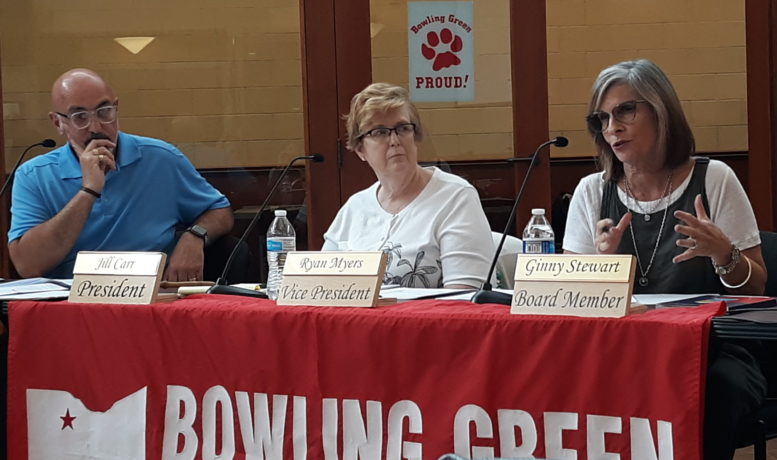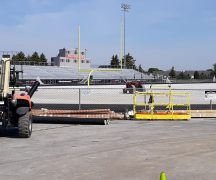By JAN LARSON McLAUGHLIN
BG Independent News
The Bowling Green Board of Education last week took the final step needed to put an issue on the November ballot for a new high school.
The board approved a resolution to proceed with a combined income tax and bond issue to generate $70 million for the new school building.
If passed by voters, a 3.9-mill property tax will be collected for 30 years, and a 0.5% income tax increase will be collected for seven years.
Based on a house value of $100,000 and a median family annual income of $66,215, the property tax portion would cost $136 a year, and the income tax portion would cost $331 a year. Since the income tax would be dropped after seven years, the payments would then be reduced to $136 a year.
A school maintenance fund is built into the income tax collection.
When discussing the building issue earlier this year, the board of education members expressed apprehension about putting a tax issue on the ballot since the last three efforts to fund a new elementary school failed – the last one by just 32 votes.
But there is some confidence that a less controversial goal of a new high school, rather than a new consolidated elementary, could get voter support.
The last time the district attempted a bond issue, a citizens finance task force recommended that the issue not rely completely on property taxes.
With property taxes, the addition of new residents and new businesses in the district help bring down the amount collected from the original property owners. The district’s tax base is about 30% businesses.
With income taxes, if the community grows, the revenue will grow. But only residents of the district pay income taxes – not businesses.
Social Security income is not taxed by either property or income taxes.
David Conley, financial consultant to the school district, pointed out that incomes in the school district have decreased in the last decade. The number of people with incomes over $75,000 has dropped from 17% to 12%.
However, the district is sensitive to agricultural property owners, who have said they will support an increase in income taxes but not property taxes. But voting records show that the rural areas of the district didn’t vote in favor of the last proposal that split the cost 50/50 between property and income taxes.
The district has also heard complaints from large rental property owners in Bowling Green, who oppose property taxes to pay for school buildings.
The board believes the short duration of the income tax – which runs out after seven years – will allow the district flexibility to address elementary building needs sooner.
With interest rates and inflation climbing, the board agreed that waiting will only cost more money. The depressing realization is that five years ago the district tried to get a levy passed to replace two elementaries and the high school – all for $72 million – compared to $70 million for just a new high school now.
The board agreed that the November ballot would also be best timing since school issues tend to have higher passage rates when more people show up to vote.
If the issue passes, the timeline for the project is tentatively six to eight months for design, then two years for construction, according to Superintendent Francis Scruci.





